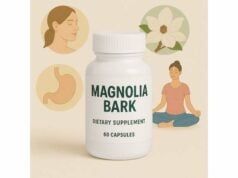
Marula oil, pressed from the kernels of the Sclerocarya birrea fruit, has become a go-to emollient for soft, resilient skin and glossy hair. Its naturally high oleic acid content helps seal moisture, while minor components such as phytosterols contribute to a smoother skin feel. In practical terms, marula oil works as a lightweight occlusive: it reduces transepidermal water loss (TEWL), boosts surface hydration, and supports a flexible barrier that feels comfortable rather than greasy. It’s also versatile. You can use it neat, mix a few drops into moisturizer, smooth it over damp hair to tame frizz, or massage it into cuticles. The oil’s relative oxidative stability compared with many polyunsaturated oils makes it easy to store and simple to use. That said, “natural” does not mean risk-free. People with acne-prone or inflamed skin should introduce it gradually, and anyone with a history of allergies should patch test. Below, you’ll find clear guidance on what marula oil is, how it works, who benefits most, how to use it, and how to use it safely.
Quick Overview
- Locks in moisture and improves skin feel; helps reduce TEWL on normal to dry skin.
- Works as a finishing, sealant oil for face, body, and hair; use 2–5 drops (≈0.1–0.25 mL) once or twice daily for the face.
- May be too rich for some acne-prone or actively inflamed skin; patch test before regular use.
- Typical leave-on usage is 2–10% in blends or up to 100% neat; avoid if you’ve reacted to plants in the Anacardiaceae family.
Table of Contents
- What marula oil is and how it works
- Evidence-based skin and hair benefits
- How to use it in your routine
- How much to use and how often
- Safety, who should avoid, and side effects
- Marula oil vs other oils: what to choose
What marula oil is and how it works
Marula oil is a fixed (non-volatile) plant oil extracted from the kernels inside the stone of the marula fruit. It is composed mainly of triglycerides—three fatty acids esterified to glycerol—along with a small fraction of “unsaponifiables” such as phytosterols and other minor compounds. This composition matters because it predicts how the oil behaves on skin and hair: its spreadability, its absorbency, its occlusivity, and its tendency to oxidize.
A defining feature of marula oil is its high proportion of oleic acid (an omega-9 monounsaturated fatty acid) typically around the low-to-mid-70% range, with linoleic acid (omega-6) commonly under 10% and the remainder made up of saturated fats like palmitic and stearic acids in modest amounts. In practice, that means marula oil feels cushiony and emollient rather than light and dry. It spreads easily, resists quick evaporation, and forms a breathable film that slows water loss from the stratum corneum—the outermost layer of your skin.
Why does this reduce TEWL? Think of your skin barrier as a brick-and-mortar wall: the corneocytes are the bricks; the intercellular lipids (ceramides, cholesterol, and fatty acids) form the mortar. When the mortar is depleted—after hot showers, harsh cleansers, or low-humidity air—water escapes faster. Occlusive emollients such as marula oil create a thin lipid layer that fills surface micro-gaps and slows evaporation, giving your own barrier lipids time to reorganize. Many people notice a near-immediate improvement in softness and a day-to-day increase in comfort.
The oil’s small unsaponifiable fraction contributes to its cosmetic performance too. Phytosterols can enhance the perception of smoothness and may support barrier comfort, while naturally occurring tocopherols (forms of vitamin E) help limit oxidative changes in the oil itself. Marula oil is not an essential oil (no aroma-therapeutic volatiles) and, when cold-pressed and properly filtered, is usually pale and mild in scent. Its relative oxidative stability (thanks to the dominance of monounsaturated fat) makes it friendly for beginners: stored away from heat and light, an unopened bottle remains usable for many months.
It’s also important to set correct expectations. Marula oil’s mechanism is mainly physical and moisturizing. It’s excellent at sealing hydration in and improving texture; it isn’t a substitute for sunscreen, retinoids, or prescription therapies. People with very oily or acne-prone skin may prefer a lighter, linoleic-rich oil or may reserve marula for specific uses—like sealing under-eye hydration or taming brows—rather than all-over daily application. That said, on normal or dry, non-inflamed skin, marula oil is a sensible, low-friction way to maintain suppleness and reduce tightness from environmental stresses.
Evidence-based skin and hair benefits
When evaluating cosmetic oils, two outcomes matter most for everyday users: hydration (how plump and comfortable skin feels) and barrier performance (how well skin retains water and resists irritants). In controlled settings, marula oil has been observed to improve hydration and exhibit occlusive behavior that contributes to lower TEWL on normal skin. For people with lipid-dry, non-inflamed skin (think seasonal dryness or tightness after cleansing), this translates into softer texture and less flaking over days to weeks of consistent use.
The oil’s high oleic acid content helps it spread and “seal” effectively. On balanced, non-sensitive skin, this is often a positive: the oil fills surface roughness and leaves a velvety finish. However, oleic-dominant oils can disrupt barrier structure if overused on already inflamed or compromised skin. That’s one reason recommendations often differ by skin status: marula oil tends to agree with normal to dry skin, whereas acne-prone or actively irritated skin might favor oils richer in linoleic acid. This nuance doesn’t minimize marula’s benefits; it guides smarter use.
Beyond hydration, users often report smoother makeup application and a visible reduction in dullness. That’s consistent with marula oil’s role as an emollient: it softens the outermost layers and reduces the look of fine, dehydration-related lines. As part of a routine that also includes humectants (like glycerin or hyaluronic acid) and a barrier-supporting moisturizer, a few drops of marula oil used last can noticeably extend the “comfortable skin” window between morning and evening.
For hair, marula oil works as a lightweight sealant on the cuticle. Applying a small amount to damp lengths reduces frizz, adds shine, and helps minimize the feel of brittleness by limiting moisture swings inside the hair shaft. This is especially helpful for wavy and curly patterns that need both water and a sealing lipid to hold definition. It can also be massaged into the scalp as a pre-shampoo treatment to soften flakes and reduce post-wash tightness, though it should be rinsed thoroughly to avoid residue.
Nails and cuticles benefit from the same occlusive and conditioning properties: a nightly drop massaged into each nail fold softens hangnails and minimizes snagging. On the body, marula oil layers well over damp skin post-shower, either neat or mixed 1:1 with a lotion to boost slip and richness without heaviness.
Finally, consider formulation synergy rather than hero-only thinking. Marula oil pairs well with humectants (to trap the water you add), ceramide-containing moisturizers (to support mortar rebuilding), and retinoids (to buffer potential dryness). Because it’s anhydrous, it doesn’t dilute actives in water-based serums layered beneath it. Used this way—strategically, as the sealant step—marula oil offers reliable, evidence-aligned benefits for comfort, smoothness, and barrier support on appropriate skin types.
How to use it in your routine
Think of marula oil as the “last coat of paint” that locks in prior layers. The order depends on texture, not brand: thinnest to thickest, with sunscreen last in the morning.
Face (morning, optional):
- Cleanse and pat dry.
- Apply water-based serums (e.g., vitamin C, niacinamide).
- Apply moisturizer.
- Optional: press 1–2 drops of marula oil between palms and gently press over cheeks and areas prone to dryness. Avoid the T-zone if you get midday shine.
- Finish with a broad-spectrum sunscreen. Oils go before sunscreen; don’t mix oil into your SPF.
Face (evening):
- Cleanse; if using retinoids or exfoliating acids, apply them now to clean, dry skin.
- Follow with a moisturizer; if you’re buffering a strong retinoid, apply moisturizer first.
- Seal with 2–4 drops of marula oil to reduce overnight TEWL and morning tightness.
Body:
- Post-shower, when skin is still slightly damp, apply your body lotion. Then smooth 4–8 drops of marula oil per limb to lock it in. For speed, mix a pump of lotion with 3–5 drops of oil in your palm and apply as one step.
Hair:
- For frizz control: warm 1–3 drops between fingertips and glide over mid-lengths and ends on damp hair.
- As a pre-wash scalp softener: massage a teaspoon into the scalp, leave 10–20 minutes, then shampoo thoroughly.
- Curly method: rake 2–4 drops over damp curls after leave-in conditioner to seal.
Brows, lashes (outer hair), lips, and cuticles:
- Dab the smallest amount on brows to hold shape and add sheen.
- Tap a drop over a wax-based balm on lips to add slip and comfort.
- Massage a drop into each cuticle nightly to reduce hangnails.
Patch testing and ramp-up:
- Apply a pea-sized amount behind the ear or on the inner forearm for 24–48 hours before first facial use.
- Start every other night for a week; increase as tolerated. If you’re acne-prone, confine use to drier zones and avoid heavy layering with other occlusives.
Storage:
- Keep the cap tightly closed; store away from heat and direct sunlight. If the scent changes sharply or the oil feels sticky, it may be oxidizing—use up on body or hair and replace.
Used purposefully—over humectants and moisturizers, in small amounts—marula oil becomes the quiet workhorse that keeps routines comfortable and results consistent.
How much to use and how often
Because marula oil is a leave-on cosmetic, “dosage” is about volume, frequency, and surface area rather than milligrams. The ranges below balance efficacy with a low risk of residue or congestion. Always adjust for climate, skin type, and what else you’re using.
Face (sealant step)
- Normal to dry skin: 2–5 drops (≈0.1–0.25 mL) once or twice daily. Use the higher end in cold, dry weather.
- Combination skin: 1–3 drops on cheeks only, once daily in the evening.
- Oily or acne-prone skin: optional, 1–2 drops on specific dry patches, up to a few times per week.
Under-eye
- 1 small drop split between both eyes at night, gently pressed over your eye cream.
Body
- 6–12 drops per leg and 4–8 per arm after lotion, once daily; more after long hot showers or swimming.
Hair
- Fine hair: 1 drop for mid-lengths and ends on damp hair; more may weigh it down.
- Medium to coarse: 2–4 drops on damp hair; a single extra drop can be used to finish and add sheen once dry.
- Pre-wash scalp treatment: up to 1 teaspoon (≈5 mL), 1–2 times weekly, then shampoo.
Blending in formulas
- Leave-on serums/creams: 2–10% marula oil is typical for a balanced texture.
- Face oils: can be used at 100% (neat) or blended 50:50 with a lighter, linoleic-rich oil (e.g., rosehip) for acne-prone skin.
- Lip and nail products: 10–30% provides slip and cushion.
Frequency
- Most users do well with once daily in the evening. Add a small morning amount in low humidity or during retinoid onboarding. If you notice mid-day shine or makeup pilling, cut the volume or reserve use for night.
When to avoid adding more
- If you’re experiencing active inflammatory acne, perioral dermatitis, or a fresh retinoid irritation flare, minimize occlusives, including marula oil, until the skin calms.
Signs you’re using the right amount
- Skin feels comfortable through the day; makeup sits smoothly; no persistent greasiness 30 minutes after application; fewer dry flakes over a week.
These practical ranges deliver the barrier-comfort benefits marula oil is known for without overwhelming your skin or hair.
Safety, who should avoid, and side effects
Marula oil is widely tolerated in cosmetic use, especially when cold-pressed and well filtered. Still, a thoughtful approach prevents most problems.
Common experiences
- Mild, transient shine or residue if you use too much for your skin type or climate. Solve by reducing the number of drops or reserving use for night.
- Occasional clogged-pore tendency in acne-prone areas when layered over multiple heavy products. Keep it simple: humectant → moisturizer → marula oil, applied sparingly on dry zones.
Irritation and allergy
- True contact allergies to marula oil appear uncommon, but marula belongs to the Anacardiaceae family (which also includes cashew and mango). If you’ve reacted to botanicals in this family, patch test carefully and consider alternatives. Any burning, visible redness, or delayed itching at the test site means stop and consult a professional.
- Avoid applying over open wounds, active infections, or weeping dermatitis. Oils can occlude and trap irritants against compromised skin.
Acne and sensitivity
- On actively inflamed or barrier-compromised skin, high-oleic oils can worsen stinging or delay recovery when overused. If you have frequent flares or are onboarding retinoids, start tiny (1–2 drops) and buffer over a plain moisturizer. If you notice increased congestion, switch to a more linoleic-rich oil or skip oil until the flare is under control.
Eyes and mucosa
- Safe for brows and outer lashes, but avoid getting oil in the eye. If it happens, rinse with water until the film dissipates.
Pregnancy and breastfeeding
- For topical cosmetic use, marula oil is generally considered acceptable. As with any new product during pregnancy, patch test first and avoid applying on broken skin. There’s no established need to apply marula oil on the breast area before nursing; if you do, wipe off excess.
Children
- There’s no special need for marula oil in babies and young children. If used, choose fragrance-free, patch test, and keep application minimal.
Interactions with actives
- Marula oil layers well with most skincare actives. It can help buffer potential dryness from retinoids and acids but shouldn’t be used to “dilute” a sunscreen or mixed directly into SPF.
When to seek help
- Persistent rash, swelling, hives, or worsening acne after stopping the oil warrants evaluation by a dermatologist or allergist.
Used with common-sense precautions—patch testing, modest amounts, and attention to skin status—marula oil has a favorable safety profile for everyday cosmetic use.
Marula oil vs other oils: what to choose
No single plant oil is perfect for every face, scalp, or climate. Choosing well comes down to fatty acid balance, finish, and how your skin is behaving right now.
Marula vs argan
- Texture and feel: Marula is richer and silkier; argan often feels a touch drier and lighter.
- Fatty acids: Marula skews oleic-dominant; argan typically has a more balanced oleic/linoleic profile.
- Who might prefer what: If your skin is tight and flakes easily, marula’s cushiony occlusion can be comforting. If you’re acne-prone or in a humid climate, argan may feel easier to control.
Marula vs jojoba
- Chemistry: Jojoba is a liquid wax ester, structurally similar to human sebum; marula is a triglyceride oil.
- Finish: Jojoba tends to sit thinner, with less “glide.” Marula has more slip and a richer after-feel.
- Use cases: Jojoba excels as a universal, non-greasy sealant, especially for oil cleansing. Marula shines as a finishing step for dry cheeks and a hair-polishing oil.
Marula vs rosehip
- Fatty acids: Rosehip is linoleic-rich and contains some alpha-linolenic acid; marula is oleic-dominant.
- Outcomes: Rosehip suits oily or congested skin that still needs a light lipid; marula is better for comfort on dry or mature skin.
- Blending tip: A 1:1 blend can produce a balanced, “just right” feel for combination skin.
Marula vs squalane
- Nature: Squalane is a hydrogenated hydrocarbon (very stable, ultra-light), not a triglyceride.
- Finish: Squalane disappears quickly with almost no residue; marula leaves a soft, conditioned finish.
- Layering: Use squalane when you want the subtlest seal over watery serums; choose marula when you want a plush feel and visible slip.
Cost and stability
- Marula oil’s high oleic content gives it better oxidative stability than many polyunsaturated oils, so it often lasts longer once opened (still store it well). If you struggle with rancid smells in other oils, marula may be easier to manage.
Bottom line
- Pick marula when you want a comfortable, cushiony seal to lock in hydration on normal to dry, non-inflamed skin or to add shine and manageability to hair. Choose a lighter, linoleic-rich oil—or skip oil—if you’re in the middle of an irritation flare or have persistently congested areas.
References
- Safety and efficacy of Sclerocarya birrea (A.Rich.) Hochst (Marula) oil: A clinical perspective 2015 (RCT)
- Vegetable Butters and Oils as Therapeutically and Cosmetically Active Ingredients for Dermal Use: A Review of Clinical Studies 2022 (Systematic Review)
- Chemical Profile and Potential Applications of Sclerocarya birrea (A.Rich.) Hochst. subsp. caffra (Sond.) Kokwaro Kernel Oils: Analysis of Volatile Compounds and Fatty Acids 2024
- Anti-Inflammatory and Skin Barrier Repair Effects of Topical Application of Some Plant Oils 2017 (Review)
- Marula [Sclerocarya birrea (A. Rich.) Hochst.] products as a food and medicine 2025 (Review)
Disclaimer
The information in this article is educational and not a substitute for personalized medical advice, diagnosis, or treatment. Always speak with a qualified healthcare professional or dermatologist about your specific skin concerns, allergies, medications, and before starting any new product or regimen. If you experience irritation, discontinue use and seek medical guidance.
If you found this guide helpful, please consider sharing it on Facebook, X (formerly Twitter), or your favorite platform, and follow us for more evidence-based skincare explainers. Your support helps us continue creating reliable, people-first content.










